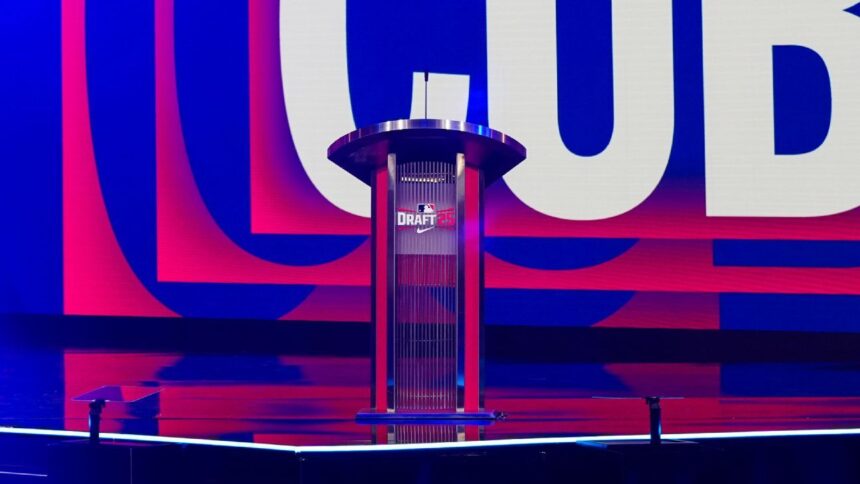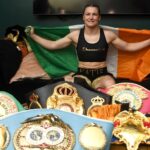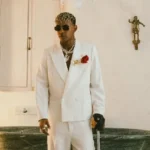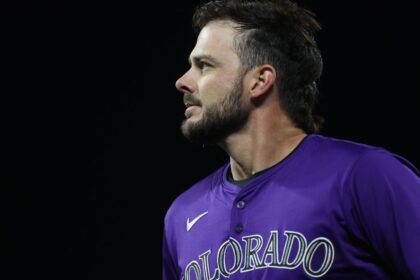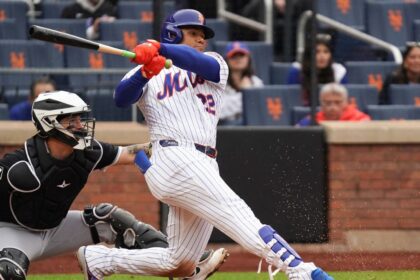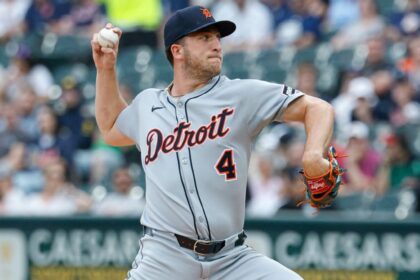In the back section of the Coca-Cola Roxy, a small venue that hosted the first round of the MLB draft, barriers were installed on Sunday night. Gray sofas had been arranged for draft hopefuls to relax with their companions while they waited for MLB, Rob Manfred, to announce their names, but there was an obvious problem: Nobody was in them. Four years ago, MLB delayed its draft, combined it with the rest of the All-Star Game events, and envisioned a grander event, with fans present, a national audience watching, and players, dressed in luxurious suits, approaching the stage to put on their first professional caps and jerseys. However, between 2021 and 2024, only six to eight players attended each year. And this year, with the Atlanta Braves and Truist Park as hosts, player attendance dropped to zero. One or two fans expressed interest in attending and were told not to bother. In the opinion of MLB, one or two was worse than zero. Two days later, while answering questions from members of the Baseball Writers’ Association of America, Manfred praised the “progress” of the MLB draft product, praising both the broadcast and the atmosphere of its most recent version, but acknowledged that player attendance is “obviously an important part”.
“Part of it is a matter of luck,” Manfred said on Tuesday. “Some agencies take the position that they don’t want their players to be there for reasons they’ll have to explain to them. I can’t. Because I think it’s an important step in terms of marketing a player and turning him into a star when he reaches the major leagues. That said, they give the advice they give.
Rob Manfred
Three agencies in particular have been identified by league officials as discouraging clients from attending the MLB draft: The Boras Corporation, Excel Sports Management, and Wasserman, which together represented 18 of this year’s top 30 picks.
The representatives of each of the three agencies denied having a strict rule that prevented players from attending the draft, stating that those decisions ultimately rest with their clients. But those agencies, as well as other agents in the industry, did identify two key reasons why some of their clients ultimately do not attend.- One is that fans, especially those fresh out of high school, don’t want to subject themselves to the public embarrassment of potentially seeing their names fall in the draft, preferring instead to host draft parties surrounded by friends and family from home.
- Another, more prominent reason, is that the economic landscape of the MLB draft disincentivizes it.
High school players can choose to attend the colleges they are already committed to, a greater draw with the money generated through name, image, and likeness deals. Junior college players can choose to return for their final years. All of them can decline bonuses offered by teams.I have players who are selected, and they still have to negotiate their contracts,” Boras said. “You can’t go out and parade in front of a live audience saying, ‘I’m with the team,’ without knowing they’re going to be with the team. We still have other options.
Scott Boras
Last year, three of the top 12 selected players and six of the top 24 were present at the draft. In each of the previous three years, one of the players present was chosen among the top six picks, including two picks by the Pittsburgh Pirates, Henry Davis and Termarr Johnson, who were first and fourth, respectively. This year, even though 12 of the first 30 selected players were from Georgia or a neighboring state, none showed up. “Sad,” said a player representative who is not affiliated with any of the mentioned agencies.The nature of our unique draft system and the culture of amateur players is the reason why they mostly choose not to attend,” wrote Joel Wolfe, executive vice president of the baseball side at Wasserman, in a text message. “Our first round is very unpredictable: there are probably between 50 and 80 kids who think they could be chosen. Players are not simply selected in order of their greatest value or ranking. There’s a lot more going on right before the moment they are selected.
Joel Wolfe
But apart from the considerable economic changes that would trigger hard spaces in the draft, one that would have to wait until negotiations for a new collective bargaining agreement, which expires after the 2026 season, are restarted, the league does not seem to have many options. This year, MLB increased its incentive package in the hope of attracting more draft hopefuls. They offered six round-trip flights, three hotel rooms, and six tickets to the Home Run Derby and the All-Star Game, along with the opportunity to chat with players during batting practice, attend the Red Carpet Show, meet Hall of Fame members and celebrities, and appear on the league’s social media channels, among other perks. Clearly, it wasn’t enough. Manfred said he has had conversations with representatives from some of the most prominent agencies “in an effort to create an understanding that this is part of a broader player marketing effort that begins with the combine, continues through the draft, continues by adding minor league baseball games to MLB.TV so that people can watch these young players, and then make a big deal about it when they get their chance in the major leagues”. The path from the ranks of fans to the major leagues can be long and arduous, with few exceptions. It will probably take at least three years before the vast majority of the 615 players drafted on Sunday and Monday reach the highest level of their profession, if they make it at all. That lack of instant gratification is one of the obvious reasons why the MLB draft will never come close to reaching the popularity of the NFL and NBA versions, two sports that also give teams less flexibility with draft signing bonuses. College basketball and college football are also much more popular than college baseball, which makes fans invest more in players before their names are announced.Embarrassing”, said another.
Representative of players
The MLB draft drew 863,000 viewers on ESPN and MLB Network in 2024, its second-largest audience and about three times larger than it used to attract in previous decades. But even its best ratings are dwarfed by the NFL and NBA, which drew 13.6 and 3.8 million viewers to their 2025 drafts, respectively. MLB officials have no illusions of ever reaching those figures. What they would like, however, is for the players, and their representatives, to be more involved in making the draft feel important.
An agent suggested paying the players to attend, as the major leaguers participating in the Home Run Derby do. Another suggested cutting off communication between the teams and their agents once a draft begins, eliminating much of the chaos before the selections are made. Otherwise, in the words of another agent, “It makes more sense for them to be at home with their family when the calls come in. It’s very stressful.”
